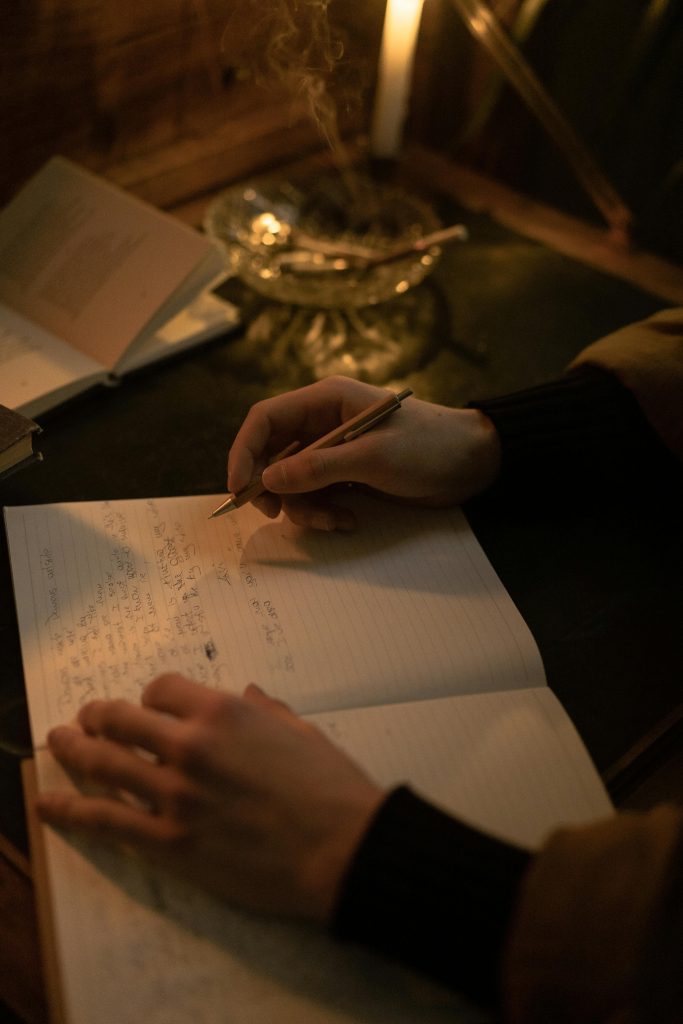Journaling has saved my life many times. Specifically, the Pennebaker journaling method has been a massive support.
I have used it many times since stumbling across it in late 2023 to process some deep grief.
I am often complimented for my resilience and poise in the face of challenges. Though, given how much I lean on such a simple tactic for support, I don’t know how much credit to take.
The bottom line is, I likely write things down more than the average person.
That could be all there is to it.
I don’t do this as part of some galaxy-brain-level master plan.
I do it so I can free up my limited brain capacity for other things.
The Pennebaker Journaling Method for Processing Personal Challenges
But journaling can be so much more than simply writing things down.
What follows is a simple, but powerful technique I have used many times to help integrate and metabolise personal challenges.

Here it is:
The Pennebaker Journaling Method
James Pennebaker is one of the primary researchers in the field of expressive writing.
This is his method for processing challenging situations via journaling.
This protocol consists of 4 sessions.
Ideally, space each session out by at least 24 hours.
I tend to space the sessions by a week but find what works for you.
Each session consists of the following:
1. Set a timer for 30 minutes.
2. During the 30 minutes, write about the facts, emotions and how the event links to the present and future.
Before we dive into the method, I want to highlight some interesting research I reviewed. It involves the use of smart journalling apps and significant objections to the practice of journalling.
You can read more about it here: why you shouldn’t journal
Facts
If a neutral third party were recalling the event, what would they describe?
For example, if I were attempting to process some early memories of being bullied during primary school, it might be:
“The boy threw a sandwich at Joey and yelled a slur at him. Joey ran away.”
Emotion
There are two components to this section: what I recall feeling at the time and how I feel as I recall the event.
Here’s what I recall feeling at the time: anger and helpless.
Here’s what I feel as I recall the event: sad.
Links
In this section, I think about how this challenging situation might be showing up currently and how it may show up in the future.
Firstly, how does it show up in the present?
For example, in reaction to the event, I may have become a bully, or I may have become extra-sensitive to seeing others be bullied.
There is a chance that I may have become indifferent to bullying. It’s still worth noting this down.
I try to remove any filters about what is noteworthy and what is not, and note everything that comes to mind as I go through this exercise.
Finally, I think about how this challenging situation might affect my future.
For example, if I have become a bully, what does that mean for the longevity of my relationships?
Or, I may have become hyper-sensitive to bullying, perhaps interpreting neutral or even well-meaning behaviours as aggressive.
Why The Pennebaker Journaling Method Works
When challenging situations happen, my lower, survival brain is more likely to be active than my higher, executive functioning.
My lower, survival-oriented brain is concerned with getting away from the danger that is causing distress.
This escape is a good mechanism for getting me away from a life or death scenario.
Escape is not a great mechanism for taking raw experience and finding insights which lead to personal growth.
When the perceived need to escape has passed, what remains is an unpleasant memory that can be overwhelming to unpack.
This method has provided me a structure to navigate the initially unpleasant experience of revisiting previous challenges.
Not a Therapy Replacement
I have been skeptical of interviews with Pennebaker where the headlines read “Be your own therapist through expressive writing.”
These headlines probably oversell the method.
However, while I don’t claim to be my own therapist, I have used this method on at least two separate occasions since learning about it in late 2023.
Making Sense of Eccentricities
In addition, at the time of writing, I am in the middle of using this method to process some childhood memories and deriving deep insights that are helping me join the dots.
By joining the dots, I am able to better understand my eccentricities and idiosyncrasies which helps make life make more sense.
Specifically, this is what I do:
The “Making Sense” process
After the above protocol is complete, I read through all of the entries in one sitting. This will usually take about 30 – 60 minutes.
As I read through, I usually find insights or other areas to explore further.
It’s a really rewarding experience.
If you decide to give this a try, here are some tips that have helped me in my exploration of this method.
Getting the Most From Your Pennebaker Journaling Method Sessions
Don’t stop writing
For brevity of this note, I have kept these descriptions short. However, I go into a lot more detail in a 30 minutes session.
In these sessions, I tend to type, rather than write by hand.
I aim to keep my fingers moving for the session.
Even if it feels like I am writing jibberish, I continue filling up the page.
Non-linear structure
Similarly, I hold the above three-section structure loosely.
Sometimes I start in the emotion section, sometimes the facts, and sometimes the links.
I find some sessions focus heavily on the facts, and some on the emotions.
Some sessions hardly hold to the structure at all and look more like a turbulent rant.
And that’s OK.
Reward Yourself
It’s easy to neglect such explorations because they are uncomfortable and the rewards are not immediate.
After a few sessions, I found intrinsic satisfaction from doing the sessions because of the insights they produced.
However, initially, it was tough. To get myself going, I used small rewards like extra video games to motivate me.
I guess, when it comes down to it, we’re all just kids trying to motivate ourselves to eat our broccoli.
Happy writing!
Thanks to the Huberman Lab podcast for introducing me to the Pennebaker journaling method!
If you enjoyed reading this, you may also like:
